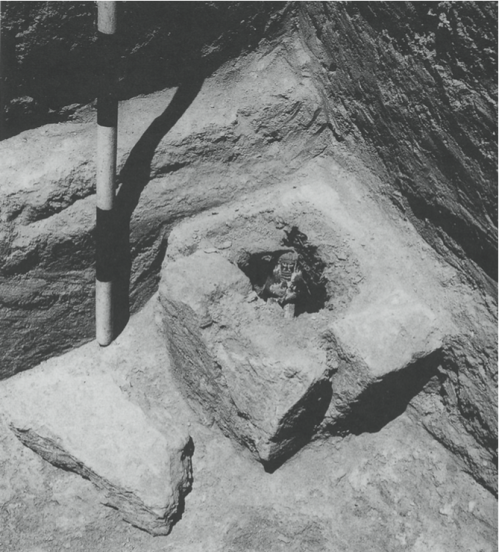Carolyn Nakamura on the Figurines
Mastering Matters: Magical Sense and Apoptropaic Figurine Worlds of Neo-Assyria
Introduction: Magical Figures from the Past
“When contemplating certain deposits unearthed during the excavations at Nimrud in the 1950s, Max Mallowan remarked, “this magical practice had an immensely long survival, as witness the nursery rhyme:
Four corners to my bed,
Four angels round my head,
One to watch and one to pray,
And two to bear my soul away.” (1966:226)
Mallowan’s commentary, rather typical of his time, concerned the discovery of numerous brick boxes encasing figurines made of sun-dried clay, found buried underneath the corners, thresholds, and central spaces of room floors, possibly where a bed once stood.
Excavations during the late 1800s to mid 1900s located such deposits in residences, palaces, and temples at important political and religious capitals of the Neo-Assyrian Empire, including Nimrud, Assur, Nineveh, Khorsabad and at Ur in Babylonia under Assyrian rule; they first appeared during the reign of Shalmaneser III and generally persisted up through the reign of Sin-shar-ishkun (ca. 858–612 B.C.).
One can imagine an excavator’s delight in finding such deposits, and there was apparently considerable competition and excitement surrounding their discovery and unveiling (Oates and Oates 2001:253–254).
But, locating such boxes did not always promise the discovery of figurines. Numerous “empty” brick boxes contained nothing more than a thick layer of sandy material, possibly remnants of decomposed organic matter such as wood or food.
Deposits from Ur contained offerings of animal bones, remnants of grain and a pottery sherd along with the clay figures (Woolley 1926:692). And at Assur, some of the buried boxes entombed miniature bronze weapons (Rittig 1977).
But perhaps the most curious finds were the figurines of “warrior” men, mythological fish- and bird-apkallū sages, human-beast hybrids, horned snakes, and other fantastical beings (Figure 2.1).

Apotropaic figurine deposit found in room S57 of Fort Shalmaneser at Nimrud. Adapted from Curtis and Read (1995:112).
Generally, such deposits comprised one, two, or seven figurines standing “at attention” in boxes facing in toward the center of the room.
These deposits, not simply buried but concealed and contained, amounted to the discovery within a discovery, the revelation of an ancient secret or desire that had remained hidden for thousands of years.
Other archaeological findings, however, had already anticipated these discoveries: ancient texts preserved instructions for an apotropaic ritual involving the burial of clay and wood figurines under room floors quite in the manner described above (Gurney 1935; Smith 1926; Wiggermann 1992).
The name of one text explicitly pronounced its purpose: šēp lemutti ina bīt amēli parāsu, “to block the entry of the enemy in someone’s house” (Wiggermann 1992:1); and the first twenty lines named the “enemy” to be almost any evil imaginable, from spirits, gods, and ancestors to disease, misfortune, Fate, and Death.
The text guided a priest-exorcist through a choreography of very specific and often protracted ceremonies involving various objects, gestures, substances, and locations, leading up to the final installation of the magically protective figures entombed underground.
Notably, another related text fragment, KAR 298, specifically detailed the making, function, character, number, and placement of the figurines (Smith 1926). The archaeological evidence proved to be remarkably consistent with these texts in terms of form and details of surface treatment, and to some extent, position and grouping of the figures.
So the Neo-Assyrians themselves revealed the secret of the figurine deposits: they were magically powerful deposits that protected the individual and his house from sickness and evil. The protective figures served to “watch,” “pray,” and “bear souls away,” as it were.”
Carolyn Nakamura, “Mastering matters: magical sense and apotropaic figurine worlds of Neo-Assyria,” Archaeologies of materiality (2005): 18-19.



